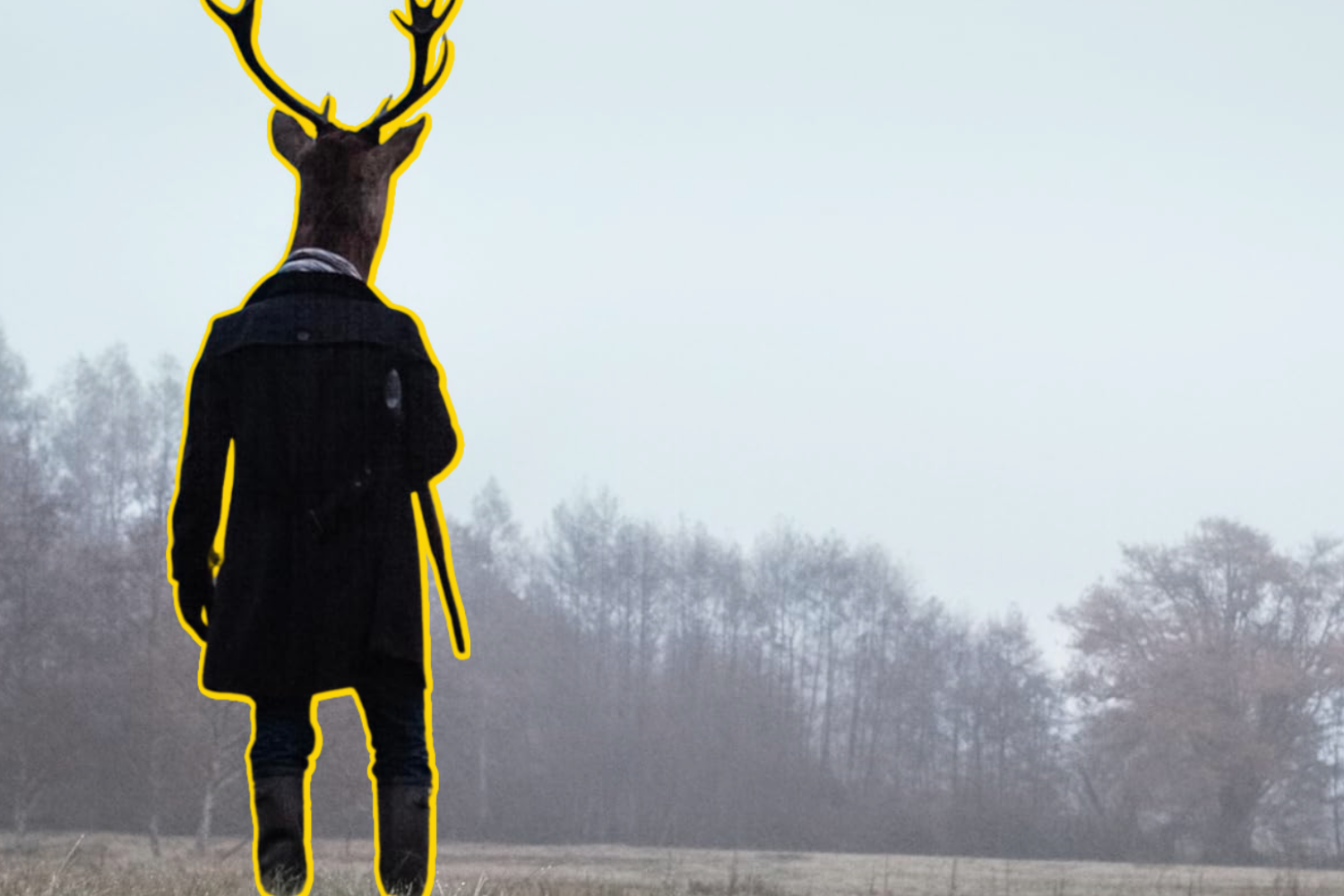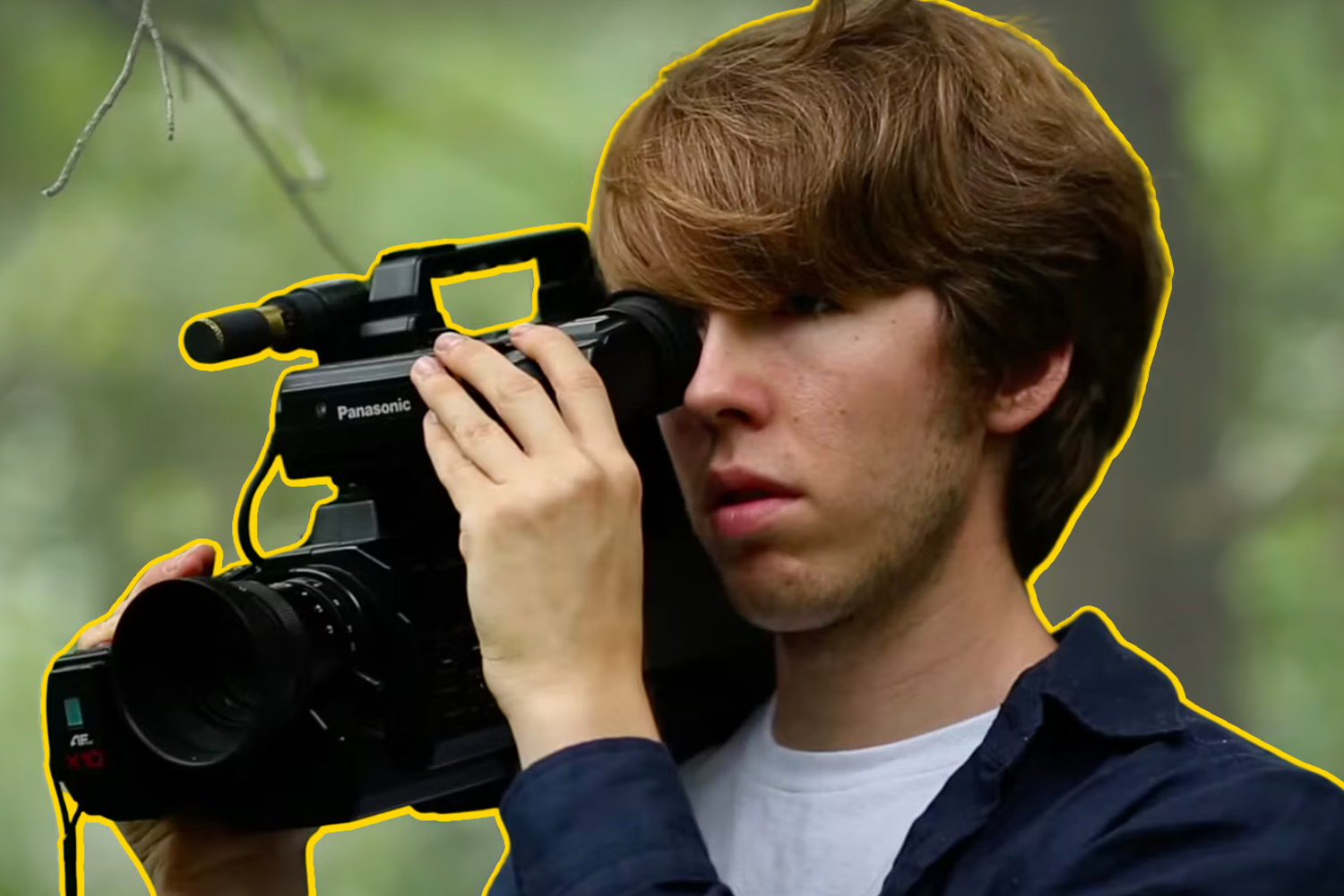Editorials
‘Anonymous Animals’ and the Making of a Monster
January 26th, 2022 | By Emily Naser-Hall

Since its early December release, Adam McKay’s darkly comedic climate-change take Don’t Look Up has occupied the top spot for Netflix viewership. McKay asks us how obvious a warning of the apocalypse has to be before we start to take it seriously. Undoubtedly McKay’s blockbuster ensemble cast—Jennifer Lawrence, Leonardo DiCaprio, and Meryl Streep, among many others—plays some role in the film’s immense popularity. But with no headliners, little marketing, and less than half the run time, Anonymous Animals manages to be infinitely more heavy-handed and miraculously more subtle.
Become a Free Member on Patreon to Receive Our Weekly Newsletter
Baptiste Rouveure’s 2020 feature-film debut, a barely-breaks-an-hour fantasy-horror experiment, depicts a rural landscape in which the balance of power between animals and humans has been reversed. The animals, who appear entirely human but for their giant animal heads, capture humans in the woods and bring them to a modern stockyard for slaughter. A group of dog-human hybrids supplement their slaughterhouse activities with a human-fighting ring, where men who have been previously treated as pets must battle to the death for the dogs’ amusement and profit.
The humans’ fear throughout the film remains highly palpable, the pulsing undercurrent that defines their relationships with the animals with absolutely no reprieve. Interspersed with extreme close-up shots of terrified human eyes and electrified cattle prods, however, are shots of profound natural beauty—dewdrops on an intricate spider web, emerald-green moss on a fallen tree. Almost more of an experiment in montage than a traditional narrative film, Anonymous Animals thus juxtaposes shots of the overcast countryside with some kind of industrial operation. Here humans are herded, confined, and possibly killed for some entirely unknown purpose.
That Anonymous Animals critiques the unbelievable cruelty of humankind’s treatment of animals is a foregone conclusion. On the one hand, this is not the time for subtlety. The end of days that will inevitably terminate the Anthropocene has been on our minds for over two millennia now. We even have the books and movies to show us what it might look like. Anonymous Animals refuses to allow for willful ignorance—there is no mistaking its message. How many times do we have to watch those investigative news pieces inside the Tyson chicken farms or listen to Sarah McLachlan implore us to fly away in the arms of the angel while abused puppies stare at us with giant eyes before we finally, finally pay attention?
But while Anonymous Animals certainly joins the ranks of more popular eco-horror films like Shivers and Annihilation, it introduces a more nuanced reading of environmental apocalypse as a necessary ramification of settler colonialism. Its scenes of rural life call to mind the landscape of the western, in which indigenous “hunters” navigate the landscape with animalistic instincts while the white “hunted” must grapple with both an unfriendly terrain and a deadly enemy. Anonymous Animals’ use of setting and a literal animal enemy reminds audiences of the horrors of colonization that requires mass slaughter as a means to conquering the land.
Like the western, Anonymous Animals makes literal the process of forced differentiation. The film features no sounds that we would recognize as human language, and the grunts, gasps, and squeals that we do hear could come equally from the animals or their human victims. In this sense, then, while the film does feature sound, it is “speechless.” Or rather, the humans are speechless, for the animals clearly communicate with each other. Rouveure manipulates the boundary between what forms of sound are considered speech versus noise such that he reveals the distinction as arbitrary, even privileged.
During a Michael Vick-cum-Fight Club scene in which two men compete in an underground “human fight” for their canine overlords, the dog-headed creatures initially appear almost comical, as if David Fincher were directing a film adaptation of the dogs-playing-poker painting. But their hound heads affixed to entirely human bodies, complete with the human hands they use to pass money to the bookie, become positively monstrous through the eyes of their battling “pets.”
The film’s conclusion reinforces the uncanny inversion of this strange doubleness. As the fight-winning human escapes from the stockyard, he is chased through the forest by a stag, resplendent in boot-cut jeans, a wool car coat, and magnificent antlers. The stag approaches the human, raises his rifle, and in a split-second, blink-and-you’ll-miss-it reversal of the film’s existing reversal, the stag becomes the human, who fires the gun at his prey. The human wears the jeans and coat of the stag, which now look entirely natural when returned to their “intended” wearer. But who is the monster, and who is the man? How ludicrous that we are what we are, and that everything that distinguishes us from not-us matters so very much.
At the most basic level, the animals—like their human colonizing doppelgangers—hunt the humans simply because they are there. We could add the stag to the scariest pantheon of horror villains, those who, like Peter and Paul in Funny Games, appear to have no motive for their brutality. But perhaps the animals do indeed have a motive, and that motive is space, space we have that they want. A stunningly simple motive for murder, sure—but millions have been murdered for the same reason.
We console ourselves that the devastation that invariably accompanies colonization—forced removal, depopulation, deforestation, mineral mining—is impersonal. We don’t have anything against the people who occupy land we want per se; we just need to use it to survive. But Anonymous Animals takes this line of thinking to its logical conclusion. If we annihilate the earth’s natural resources purely for our own survival, then we do it simply because we are. The apocalyptic power inversion it depicts, then, is also nothing personal.
We are given no indication that the animals are doing this for revenge or in service of men. They’re doing this because, well, they just are. However, because we, the human audience, identify most closely with the humans on screen, it’s hard not to take it personally. And that’s the point—we should have been taking it personally all along. Colonization is nothing if not personal, and generations of pretending otherwise in service of our own progressive hubris has led us to the world of Anonymous Animals, a world in which we seem shocked that those who have suffered brutally at our hands don’t care about us at all.


